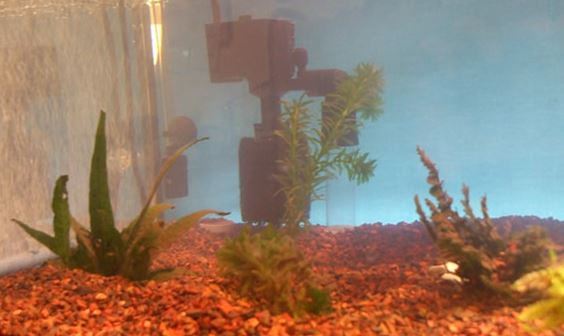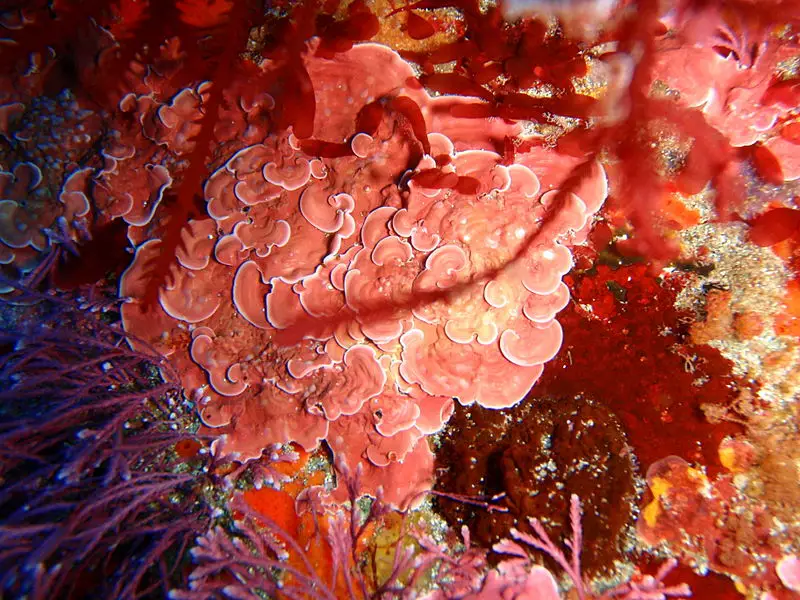For new aquarium setups, algae can begin growing as soon as two weeks after the tank has been established. Algae need food in order to grow so there has to be plenty of nitrate in the water for them to start thriving.
If you’re new to fish keeping, one thing you’ve probably noticed on every forum and blog is how to get rid of the algae that grows in your tank.
It doesn’t take long for the aquatic greens to colonize your new fish tank. Within the first two to four weeks, you’ll begin to see algae growing on every surface of the tank – the glass, the substrate, and even the plants.
In this article, we will clue you in to how fast algae can grow in a fish tank, why it grows as fast as it does, and what the best conditions are for fast algal growth. Get to know the algae in your tank so you can figure out how to avoid an overpopulation problem!
How Fast Can Algae Grow in a Fish Tank?
Although algae need to wait until the planted vegetation converts enough ammonia into nitrate to begin fueling their blooms, they can grow exponentially once they are established. There are different kinds of algae that can inhabit your fish tank that all have different growth rates.
However, if provided with the right amount of nutrients, all species of algae can grow to an unmanageable degree within a matter of days. If you see a tiny speck of algae on the glass of your fish tank, don’t ignore it. Within two to three days, that speck can grow large enough to monopolize a decent amount of real estate on the glass of your tank.
Microalgae, or small algae, can double in size within a day. Most microalgae species you’ll find in your tank will form carpets or mats of colonies. If you have a microalgal colony the size of dime today, by tomorrow it will be the size of a quarter. These little organisms don’t need much in order to grow.
All they require is room and nutrients and they will outcompete anything in their way. It’s important to have a method of controlling the growth of algae in your fish tank such as algae eaters like Plecos.
How Does Algae Grow So Fast?
It doesn’t take a lot for algae to grow in your aquarium tank since they are optimized for fast growth and survival. They may not be complex organisms, but their simplicity helps them reproduce extremely quickly. If there is an abundance of nutrients, the algae will take advantage of the food and convert it to fuel for growth and reproduction.
Light also helps algae grow fast because they are photosynthetic organisms like plants. If algae are exposed to light, they can convert it and the nutrients into usable energy for growth. If your aquarium tank is set in a window or a bright sunny location, that could be encouraging faster algal growth.
Microalgae are also fast growers because they reproduce so rapidly. Most algal species that inhabit fish tanks do not need male and female organisms in order to reproduce. Rather, many microalgal species reproduce asexually. They split their cells and grow a whole new organism from the broken off material.
Where there was once one organism, now there are two. As you can see, this doubling effect is what contributes to the exponential growth seen in many aquarium algal species. Don’t understand the speed of reproduction in these organisms. Although conditions need to be just right, the right conditions are extremely common.
Which Are the Best Conditions for Fast Growth?
There are three main ingredients for algae to grow fast: light, water, and nutrients. Since algae are photosynthetic, they require sunlight to make fuel for growth. If you place your aquarium tank in a place that receives a lot of sunlight or underneath an artificial light specifically designed for plant growth, then you will see fast growth of algae.
Algae thrive on nutrients. Most microalgae need lots of nitrate in order to reproduce and your aquatic vegetation can conveniently supply most of the nitrate when they convert ammonia from the water. Some species of tank algae require different kinds of nutrients in order to grow in abundance.
For example, if there is a lot of waste, phosphorus, or iron in your tank’s water, certain species of algae can overtake the area. The good thing about the presence of these types of algae is that you can usually diagnose the problem according to what kind is actively growing. This way you can rectify the problem before it negatively affects your aquarium inhabitants.
The last ingredient for allowing algae to thrive is water. Algae cannot survive outside of water, but then again, neither can your fish. There’s really no such thing as an abundance of water that will promote algal growth so the two main conditions you need to be aware of are light levels and nutrient abundance.
Conclusion
If you own an aquarium tank, you know that algae are often uninvited guests in your fish’s home. Algae can start to grow as soon as two weeks after your tank has been set up. Depending on how much aquatic vegetation you have, this is the earliest timeframe that your aquarium plants will have successfully converted excess ammonia in the water into nitrate.
Algae thrive on an overabundance of nutrients, especially nitrate, iron, phosphorus, and organic waste. They also need lots of light in order to photosynthesize. Algae can double in size within a day since they reproduce asexually by dividing their own cells.
If you are looking for a way to slow down the growth of algae in your tank, consider eliminating one or more of the variables that cause excessive growth. Alternatively, you could introduce algae eating fish like Plecos or Platys into your aquarium to help keep the algal colonies under control.



